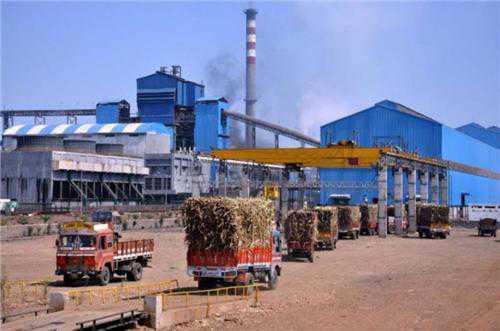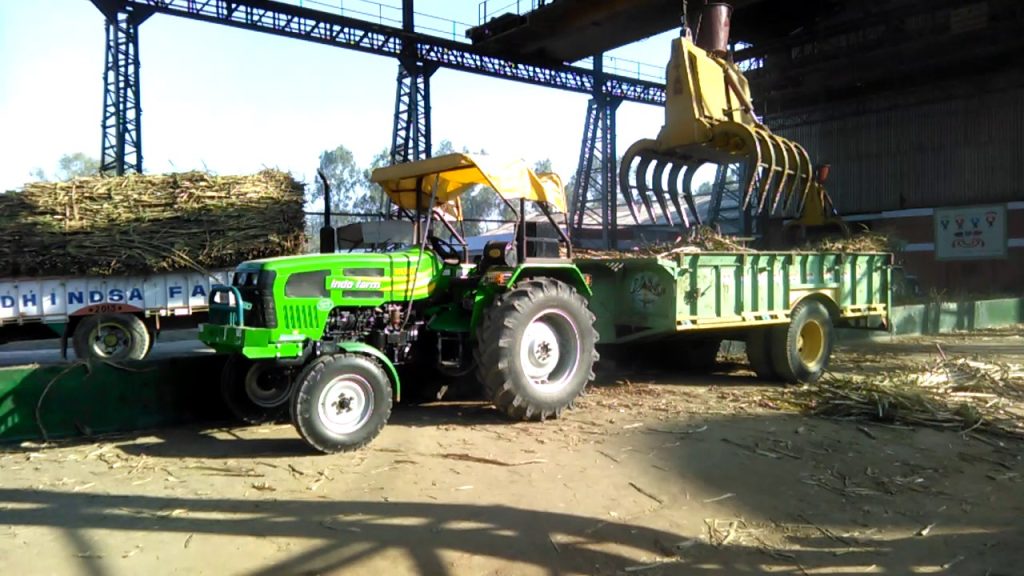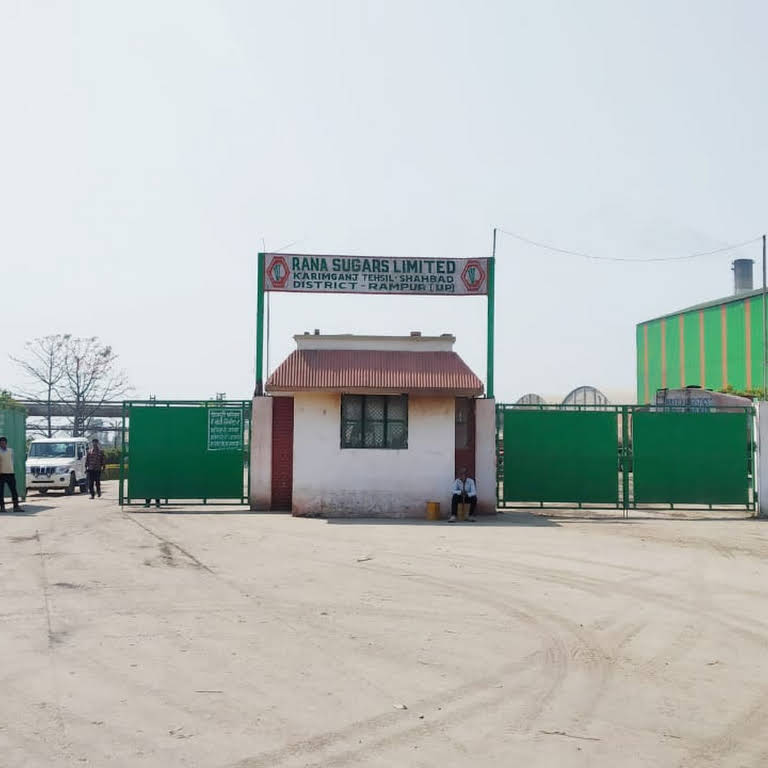Dive into the comprehensive saga of Shahabad Sugar Mill. From its rich history to modern innovations, discover how this beacon of the sugar industry sets new standards in sustainable production. Shahabad Sugar Mill, a testament to resilience and innovation, has a rich history dating back to its inception when it bolstered the local economy and sugar industry in India. Its journey reflects a legacy of adapting to market trends while maintaining a steadfast commitment to quality.
Where is Shahabad Sugar Mill located?
Nestled in the agricultural heartlands, Shahabad Sugar Mill’s strategic location has been pivotal in its access to premium sugarcane, fostering symbiotic relationships with local farmers and contributing immensely to regional development.
Address: Shahabad-Ladwa Rd, Chhapri, Haryana 136135, India
Hours:
Open now
Add full hours
Phone: +91 1744 240 188
How is sugar produced at Shahabad Sugar Mill?
Sugar production at Shahabad is a meticulous blend of tradition and technology. From careful sugarcane selection to advanced milling processes, every step is calibrated for excellence, ensuring unparalleled product quality.
- Sugarcane Harvesting and Transportation: The process begins with the harvesting of sugarcane, primarily sourced from local agricultural lands to ensure freshness and quality. After harvesting, the sugarcane is transported to the Shahabad Sugar Mill for processing. Prompt transportation is crucial to prevent sucrose deterioration.
- Cane Unloading and Washing: Upon arrival, the sugarcane is unloaded and thoroughly washed to remove dirt, soil, and other impurities. This step is vital for maintaining the quality of the sugar produced.
- Crushing and Extraction: The clean sugarcane then goes through a series of crushers or mills to extract the sugarcane juice. The mill operates with heavy rollers or crushers that separate the juice from the pulp. The extracted juice contains 10-15% sucrose, while the remaining crushed stalks, known as bagasse, are often used as a biofuel for the mill’s operations.
- Clarification: The sugarcane juice is then clarified to remove impurities, solids, and organic matter. This process involves heating the juice and adding lime and other clarifying agents to settle the impurities, which are then skimmed off or filtered out.

What are the products manufactured by Shahabad Sugar Mill?
Beyond granulated sugar, Shahabad Sugar Mill pioneers a range of products, including specialty sugars and by-products like bagasse and molasses, catering to diverse markets and epitomizing versatility in the industry.
- White Sugar: The primary product, white sugar, is produced through advanced processing and refinement of sugarcane juice to remove molasses and impurities. The mill ensures the production of high-grade, refined white sugar suitable for direct consumption and use in a wide array of food products.
- Brown Sugar: Shahabad Sugar Mill also produces brown sugar, a less refined product with a distinctive brown color and flavor. This product is popular in various culinary applications and is valued for its unique taste derived from the presence of molasses.
- Specialty Sugars: Catering to niche markets, the mill manufactures a range of specialty sugars that may include organic sugar, icing sugar (powdered sugar), and cubed sugar. These specialty products meet specific consumer needs and standards for different culinary and industrial applications.
- Molasses: A by-product of sugar production, molasses is a thick, dark syrup used in the fermentation industry, particularly for producing alcohol and ethanol biofuels. It’s also an essential component in animal feed due to its high nutritional value.
What is the current status of Shahabad Sugar Mill?
In the face of industry challenges, Shahabad Sugar Mill stands as a paragon of sustainability and economic viability. Its current operations underline a commitment to environmental stewardship and community welfare.
What are the challenges faced by Shahabad Sugar Mill?
Shahabad confronts various hurdles, from fluctuating market conditions to climatic impacts on sugarcane yield. However, its proactive strategies in resource management and technological advancements herald a promising way forward.

Are there any job opportunities at Shahabad Sugar Mill?
As an ever-expanding enterprise, Shahabad Sugar Mill offers myriad career opportunities, inviting professionals to contribute to its legacy of excellence and community development.
What is the annual sugar production capacity of the Shahabad Sugar Mill?
Shahabad’s impressive production capacity, a hallmark of its efficiency, meets escalating demand through optimized processes and a robust supply chain, affirming its stature in the global sugar arena.
While I don’t have the specific current data for Shahabad Sugar Mill’s annual production capacity, typical sugar mills in India, especially those of substantial size and modern enhancements, can have an annual production capacity ranging from 250,000 tonnes to over 500,000 tonnes of sugar.
Shahabad Sugar Mill, given its significance in the industry and region, likely operates within this upper range, leveraging its robust infrastructure, extensive cane supplier network, and advanced machinery to achieve high production volumes. However, for the most accurate and current figures, one would need to refer to the mill’s latest annual report or contact the mill directly, as these figures can vary year by year based on the factors mentioned above and specific business and operational strategies.
How does the sugar industry in India compare to other countries?
India’s sugar sector, with its unique challenges and opportunities, stands on the global stage as a significant player. Comparative analysis reveals its competitive edge in production costs and innovative farming practices.
- Production Capacity: India is one of the world’s largest producers of sugar, consistently ranking at the top alongside Brazil. The country’s sugar production caters to a massive domestic market and also contributes significantly to the global sugar supply. Brazil, another heavyweight, is known for its large-scale production and export-oriented strategy, heavily focusing on sugarcane-based ethanol production alongside sugar.
- Agricultural Practices: Sugarcane cultivation in India often relies on traditional methods and is characterized by smaller farm holdings compared to countries like Brazil and Australia, where large-scale, mechanized farming is more common. This difference impacts productivity and the cost of production.
- Market Dynamics and Consumption: India has a vast domestic demand for sugar, leading to a significant portion of its produce catering to local markets. In contrast, countries like Brazil, Thailand, and Australia have a substantial export quotient, influencing global sugar prices and market trends.

What are the environmental impacts of sugar production at Shahabad Sugar Mill?
Shahabad Sugar Mill prioritizes environmental conservation, acknowledging the ecological footprint of sugar production. Its strategies extend beyond compliance, embodying responsible water usage, waste reduction, and carbon footprint minimization.
- Water Consumption and Pollution: Sugar production requires substantial water for sugarcane irrigation, and processing in the mill. The effluents from the sugar processing can contain organic residues, chemicals, and nutrients. If not properly treated, these effluents can pollute water bodies, affecting aquatic life and the health of communities relying on these water sources.
- Air Pollution: The burning of bagasse for energy or the open-field burning of sugarcane (pre-harvest) can release pollutants like particulate matter, carbon monoxide, and nitrogen oxides into the atmosphere. These pollutants contribute to air quality deterioration, potentially harming human health and contributing to the greenhouse effect.
- Soil Degradation: Intensive sugarcane farming can lead to soil erosion, nutrient depletion, and overall soil degradation, especially if crop rotation is not adequately practiced. Agrochemicals used for sugarcane cultivation can also affect soil quality and biodiversity.
- Biodiversity Loss: The expansion of sugarcane plantations can lead to deforestation or the conversion of natural habitats into agricultural land, impacting local biodiversity. It can also cause fragmentation of habitats, affecting wildlife and plant species in the region.
- Waste Management: Sugar production generates several by-products like bagasse, filter mud, and boiler ash. While these can be resourceful in various applications (e.g., using bagasse for energy generation), ineffective waste management strategies can lead to environmental issues.
What technologies are used in sugar processing at Shahabad Sugar Mill?
Embracing cutting-edge technology, Shahabad Sugar Mill revolutionizes sugar processing. From advanced machinery that ensures precision and efficiency to sustainable practices, it is at the industry’s technological forefront.
- Milling Technology: Advanced milling machinery helps in the efficient extraction of juice from sugarcane. High-performance mills, enhanced by automated systems, ensure higher extraction rates and better cane throughput while minimizing energy use and maintenance needs.
- Continuous Vacuum Pans: These devices are used for the crystallization of sugar, offering a more energy-efficient solution compared to traditional batch pans. They allow for continuous processing, consistent quality, and higher sugar recovery rates.
- Centrifugation: Modern centrifugal machines are used to separate the sugar crystals from the mother liquor. These high-speed centrifuges, often controlled by sophisticated automation systems, contribute to higher purity and recovery of sugar.
- Membrane Filtration: For juice clarification and syrup purification, membrane technology offers an alternative to the conventional sedimentation process, helping to produce higher-purity juice and reducing the need for chemicals.


Leave a Reply